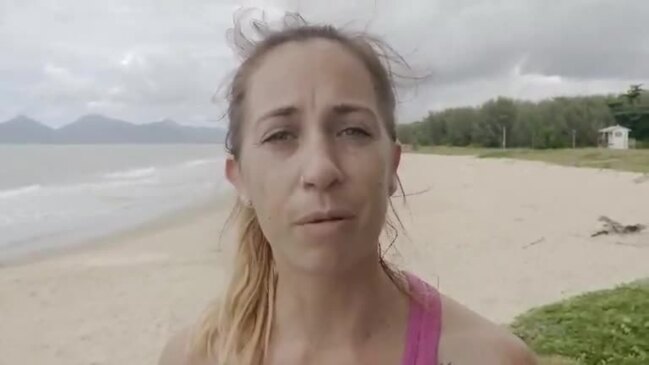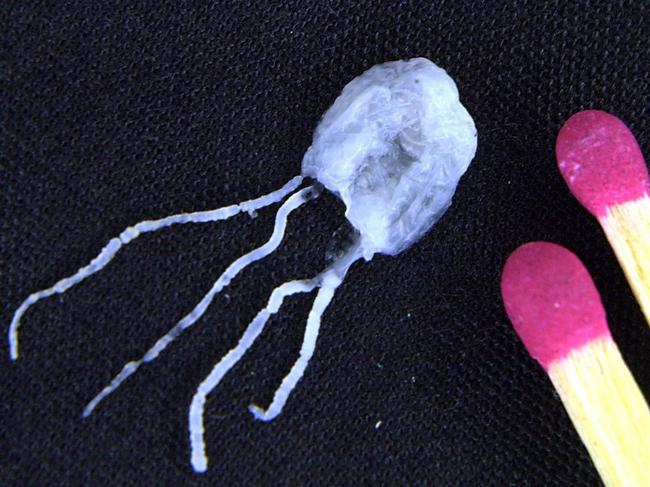Irukandji jellyfish stings spike fourfold in Qld in past year
Shark attacks might grab all the headlines, but there’s a more insidious threat that’s affecting more and more beachgoers.

QLD News
Don't miss out on the headlines from QLD News. Followed categories will be added to My News.
The number of Irukandji jellyfish stings in Queensland has spiked in the past 12 months, as experts warn much more needs to be done to drop the number of stings.
New data provided by Surf Life Saving Queensland shows 23 people were stung by the extremely venomous jellyfish between July 1, 2019, to June 30, 2020, compared with only six the year prior and nine the year before that.
Surf Life Saving Queensland summer safety campaign targets men over 50
Townsville City Council rolls out stinger nets as warm weather sets in
Australian Marine Stinger Advisory Services services Lisa Gershwin said Queensland should be throwing more resources at pushing down the numbers for health and tourism confidence.
“I have already conducted and published scientific research that proves that swimwear (the covers more skin) works highly effectively, but it is not promoted enough,” Ms Gershwin said.
“But even better would be to know when and where the highest risk is going to be, in advance.”
University of Southern Queensland associate professor Lynda Crowley-Cyr agreed, saying the public should not underestimate the danger of a Irukandji sting.
“The signs and beach safety flags at the entrance of nets along with lifeguards directing people to swim inside the nets create a perception of safety inside the nets, but this is not so,” Ms Crowley-Cyr said.
“Irukandjis can swim into the nets and sting.
“Each sting will cause Irukandji syndrome at best, and death at worst.
“My research shows that visitors, especially overseas tourist, are not aware of this.”
It comes as SLSQ issues a fresh warning not to be complacent about the risks of swimming in still water, as rivers, creeks and lakes last year claimed double the number of lives as beach drownings.
In the year to June 20, 22 people died while swimming in inland waterways, compared with 11 lives on beaches in the same period.

Lifesaving operations co-ordinator Jack McNeil said SLSQ was seeing potentially worrying trends as swimmers steered clear of popular beaches as a result of COVID-19.
“One of the trends we’re noticing at the moment is that people are trying to go to these places where there aren’t many people, and we’re seeing that people want to swim in water away from the crowd,” Mr McNeil said.
“There’s definitely a misconception that these flat-water locations are a safe place to swim, but quite often there can be dangers lurking underneath (like) strong current and rocks.
“The terrain can make these places quite dangerous.”
In the past five years, inland waters have claimed 141 lives – a number that towers over the 55 beach drownings in the same period.
The Brisbane River has claimed the lives of nine swimmers since 2015, while Townsville’s Ross River has claimed four lives.
Mr McNeil said a “she’ll be right” approach to swimming at unpatrolled waterways was also a worrying mindset.
“The misconception is that people think ‘I’m an Aussie, I know what to do.’ (and) it’s that ‘she’ll be right mentality,’ that’s very dangerous,” he said.
Mr McNeil said swimming in between the flags during patrol times, always swimming with a mate, and not going swimming after drinking were three key safety factors to keep in mind when taking to the water this season.


